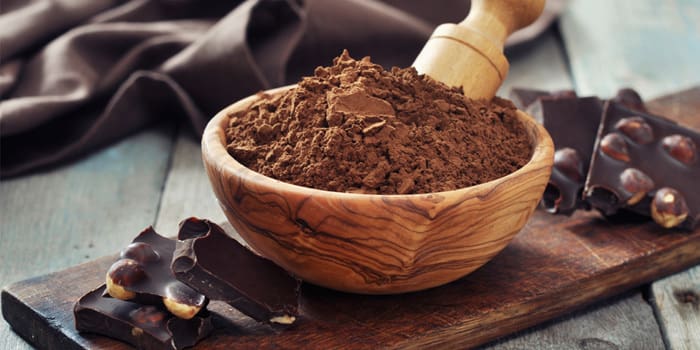18 Ingredients That Sound Dangerous, But Aren’t

We all read labels at varying magnitudes of scrutiny, but unless you have a degree in organic chemistry, you can’t possibly be expected to recognize everything that’s in today’s food unless you’ve ripped it out of the ground yourself.
Unfortunately, you can’t rely solely on the FDA to protect you from rogue additives. A study published last year by the Journal of the American Medical Association revealed that 35% of ingredient approvals over the preceding 15 years were evaluated by food companies or their paid consultants—without FDA guidance.
That doesn’t necessarily signify foul play, but when the health effects of the foods we eat are judged by the companies selling them, it makes label vigilance even more imperative. That can mean discovering that your favorite snack food has powdered bug skulls in it, but it can also mean learning that the additive you’ve always avoided because it sounds like a Star Wars villain is actually (Darth) innocuous.
With that in mind, the following food ingredients are generally harmless despite their nefarious names. Keep in mind, this doesn’t mean they’re safe for all— those with specific dietary aversions may experience difficulties not encountered by the rest of us, so make sure you’re not averse before consuming.
Propylene glycol alginate
Uses: Thickens, stabilizes, and emulsifies.
What is it? A powder obtained from kelp and…wait for it…algae! (Hence the name.)
What it’s in: Ice cream, salad dressing, beer (to ensure foaminess).
Safety link
Alpha tocopherol
Uses: Added nutrient and preservative against rancidity.
What is it? A form of vitamin E most commonly extracted from soybean oil.
What it’s in: Cereals, vegetable oils, nut butters.
Safety link
Amylase
Uses: Converts starch to sugar, helps dough rise, and extends product shelf life.
What is it? You’re consuming it right now. It’s an enzyme that’s derived from swine pancreas or mold mushrooms and is also found in saliva—your saliva.
What it’s in: Baked goods, cereal, juice, spirits.
Safety link
Carboxymethyl cellulose
Uses: Thickens and prevents crystallization. It’s derived from woody parts and cell walls of plants. If, for some reason, that bothers you, rest easy knowing it’s fiber, so it’s unabsorbed.
What is it? An additive derived from the cellulose of plants and trees. Please don’t ask us to type it again.
What it’s in: Frozen desserts, jellies, icing, wine.
Safety link
Acids
Ascorbic acid: A color stabilizer and nutrient added to fruit juice, chewing gum, and canned fruit, it’s a more frightening way to say vitamin C.
Citric acid: Used mostly as a tart flavoring and natural preservative in soft drinks, sorbet, candy, and powdered drinks, it’s derived from citrus and other fruit.
Malic acid: A tart, fruity flavoring in wine, fruit drinks, yogurt, and candy, it’s what makes green apples sour and is also found in grapes.
Pantothenic acid: It’s vitamin B5, which is added to beverages and breakfast cereal, and is found naturally in meat, vegetables, grains, legumes, eggs, and milk.
Sorbic acid: An anti-mold agent used to preserve cheese, jelly, wine, and other foods, it’s an unsaturated fatty acid that occurs naturally in plants.
Pyridoxine
Uses: Added nutrient.
What is it? Vitamin B6, the way riboflavin is vitamin B2. It can be harvested from many foods including rice, soybeans, and liver, but when used as an additive, it’s usually synthetic.
What it’s in: Cereals, instant breakfasts, health-food bars, energy drinks.
Safety link
Calcium propionate
Uses: Mold prevention.
What is it? An antifungal mineral that’s naturally produced in the body, but when used as an additive is synthesized chemically. Sodium propionate is another form, only sodium-er.
What it’s in: Baked goods, dairy products like butter, cheese, spreads.
Safety link
Gums
Locust bean (carob) gum: A sweetener and thickener used in frozen desserts, sauces, diet foods, and as a chocolate substitute. It comes from the Mediterranean carob tree.
Xanthan gum: Added as a thickener/emulsifier in baked goods, yogurt, and creamy condiments; it’s the product of bacteria and fermented sugar.
Guar gum: It texturizes baked goods, stabilizes soups and sauces, thickens dairy products, and waterproofs explosives. Extracted from guar beans.
(Acacia) gum Arabic: Like the other gums, it thickens foods like pudding, frosting, candy, and chewing gum, and is a water-soluble fiber derived from acacia trees.
Ascorbyl palmitate
Uses: Added nutrient and prevention against rancidity (basically, a preservative).
What is it? A compound of ascorbic and palmitic acids aided by yeast enzymes that ends up being absorbed as vitamin C and fat energy.
What it’s in: Breads, crackers, cookies.
Safety link
Maltodextrin
Uses: Thickens, texturizes, and occasionally sweetens starchy foods.
What is it? A modestly-sweet sugar derived by boiling down rice, corn, or potato starch, then adding acids and/or enzymes to break it down some more.
What it’s in: Baked goods, chips, cereal, energy bars.
Safety link
Castoreum
Uses: Flavoring, particularly berry and vanilla.
What is it? A secretion extracted from castor sacs on the back end of a beaver. (Don’t worry, we’re getting to the harmless part.) If that freaks you out, wait until we tell you where chicken eggs come from. Get past it; it’s generally recognized as safe.
What it’s in: Baked goods, candy, chewing gum, frozen dairy products. Only about 300 to 1,000 pounds of it is used overall in the U.S. per year.
Safety link
